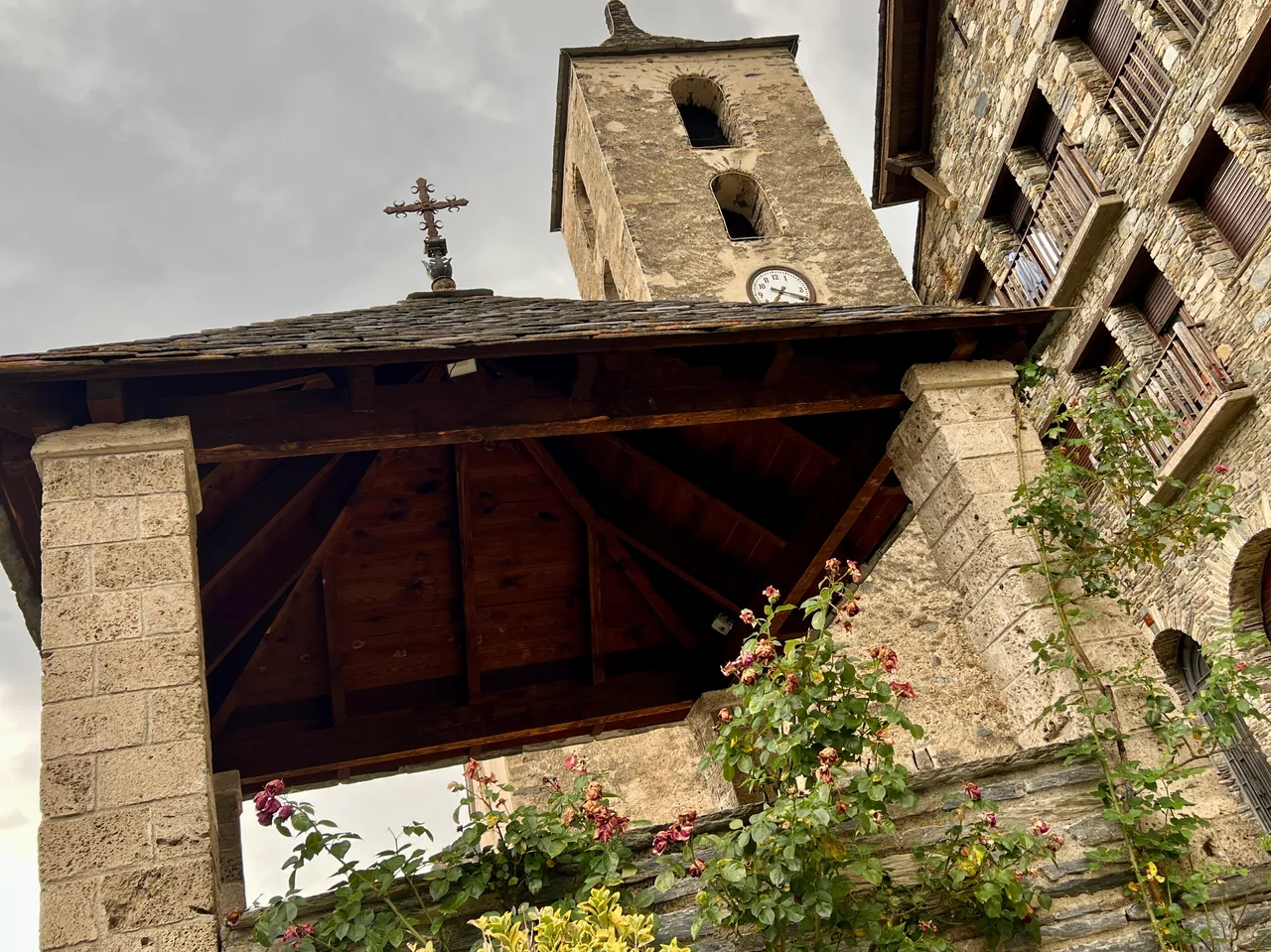

Hola querido hiver.
Retomo las publicaciones de fotografía tras la pausa de la semana pasada, en la que mi vida se volvió del revés. Pero hay que continuar y hacer las cosas que me gustan se convierte en una excelente manera de renovar la motivación.
El pueblo andorrano de Ordino tiene una pequeña iglesia parroquial del siglo XVII, dedicada a sus patrones San Corneli y San Cebrià. En este post te la muestro por fuera y por dentro.
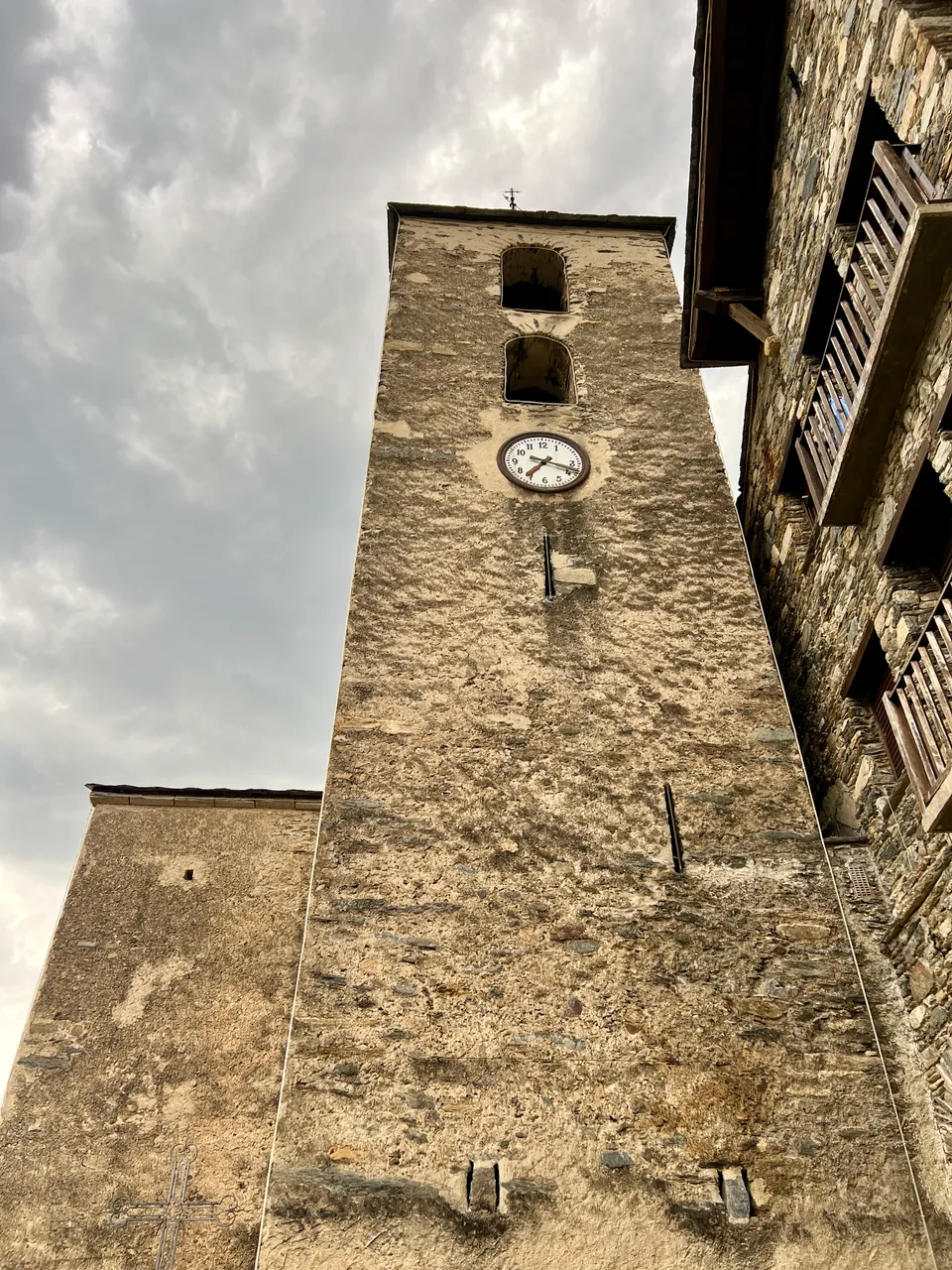
En la construcción destaca la altura de la torre del campanario, tiempo atrás el punto más alto del pueblo. Su silueta es típica de las montañas del Pirineo, en planta cuadrada y con su tejado de pizarra a cuatro vertientes.
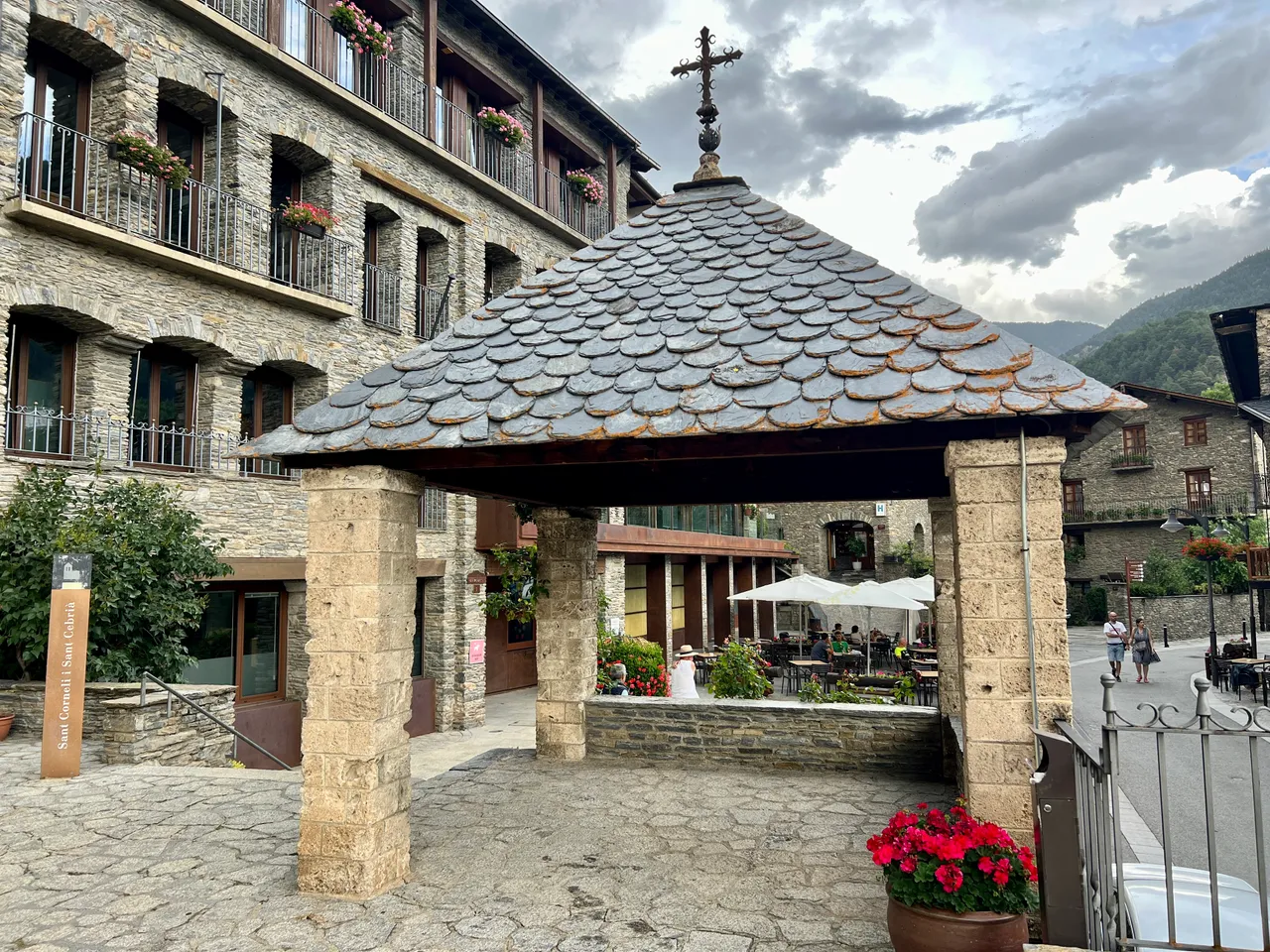
La iglesia se sitúa junto al ayuntamiento. Les separa un corto tramo de escaleras, al final de las cuales alcanzamos una pequeña plaza. En ella hay una construcción peculiar, un tejado que cubre un espacio cuadrangular y bajo el cual no hay nada. Se utilizaba como lugar de ceremonias para ahuyentar las tormentas.
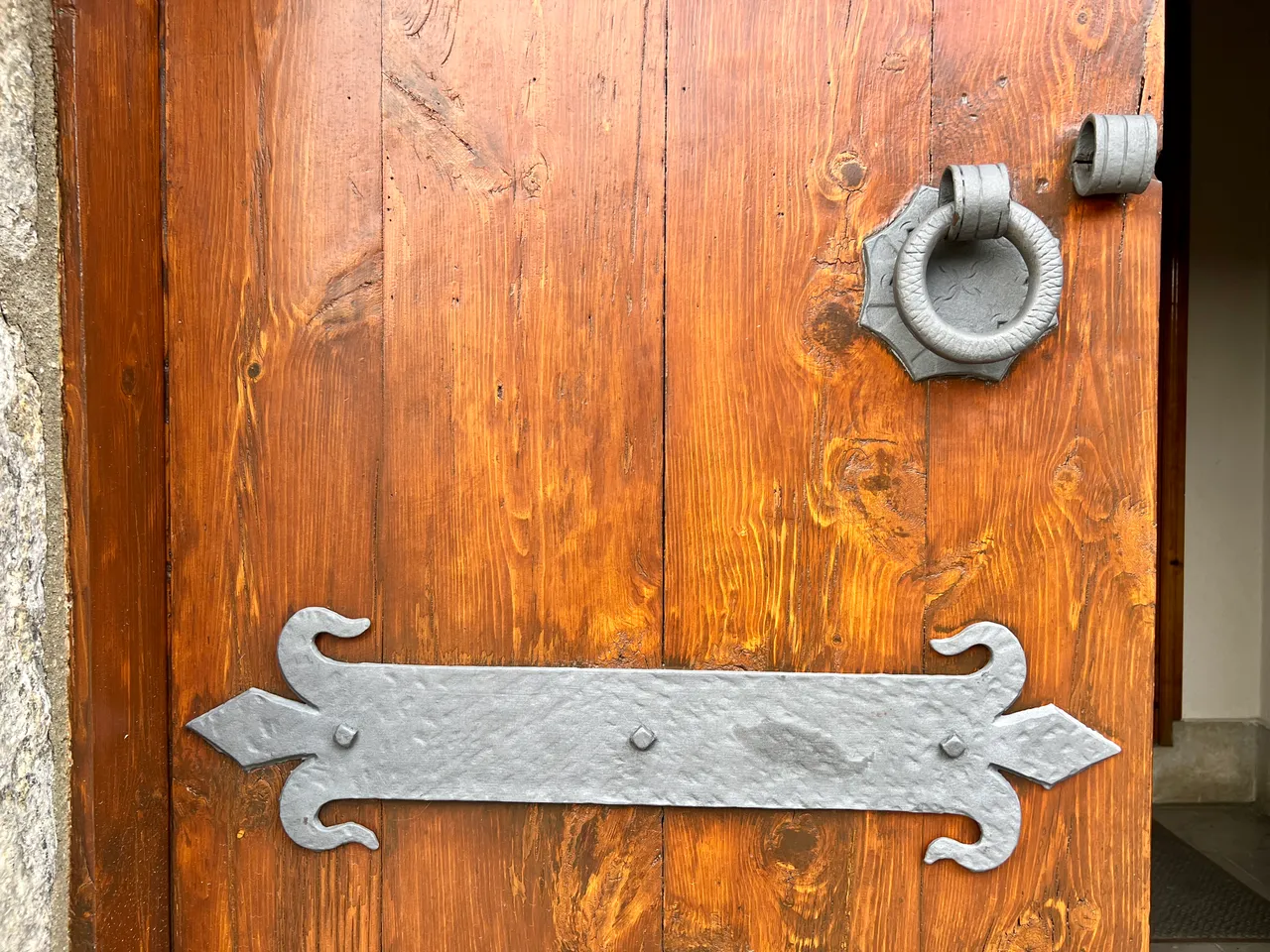
La puerta del templo es diminuta y no posee apenas adornos, aunque me gustaron mucho las piezas de forja del cerrojo y el llamador. El valle en el que se encuentra Ordino tuvo como actividad económica principal la extracción y manufactura del hierro siglos atrás y eso se aprecia por todas partes, incluido su centro parroquial.
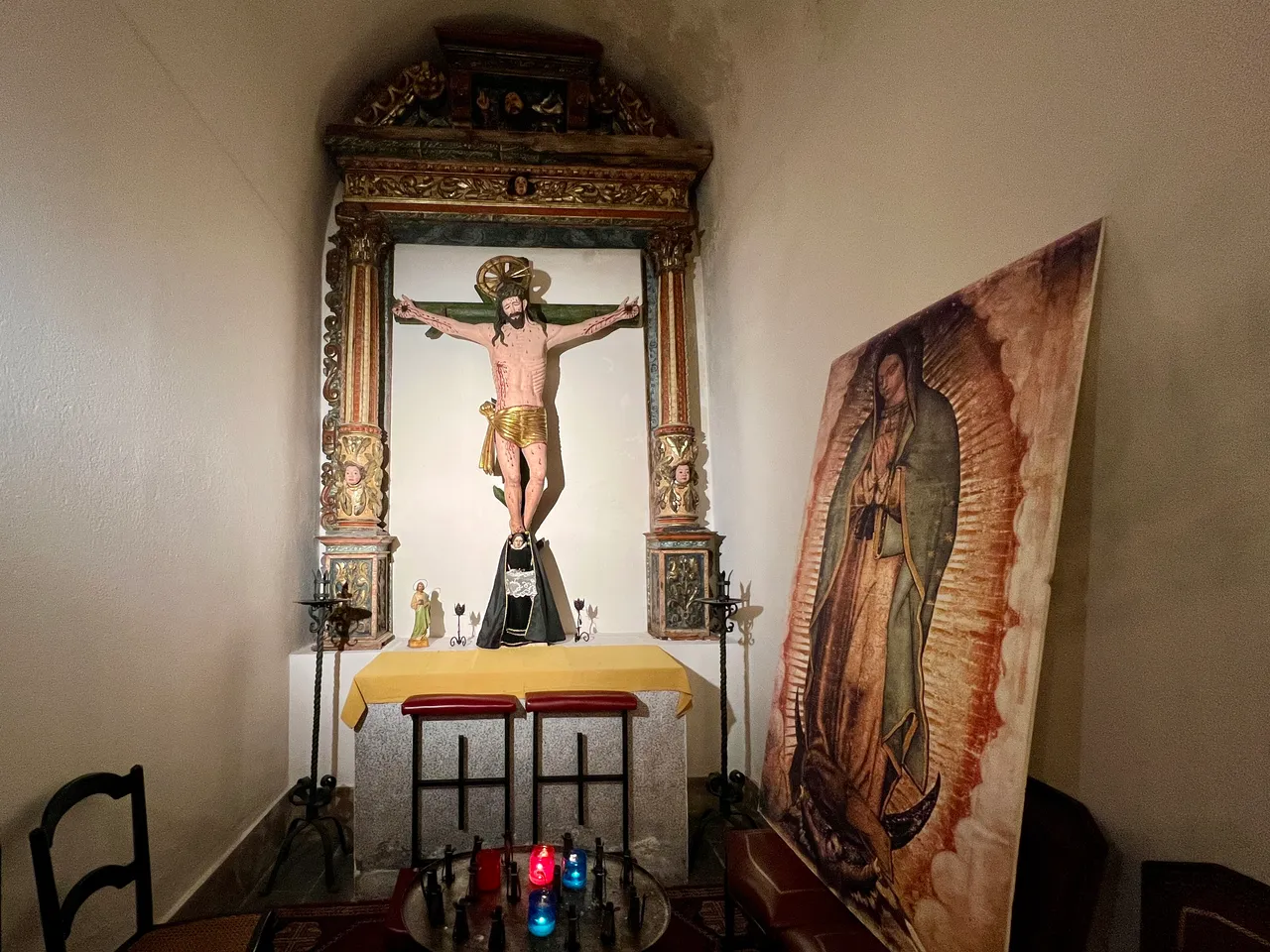
La iglesia tiene cuatro capillas laterales y un ábside central con el altar. Las dimensiones de todas ellas son reducidas, como se aprecia en esta primera.
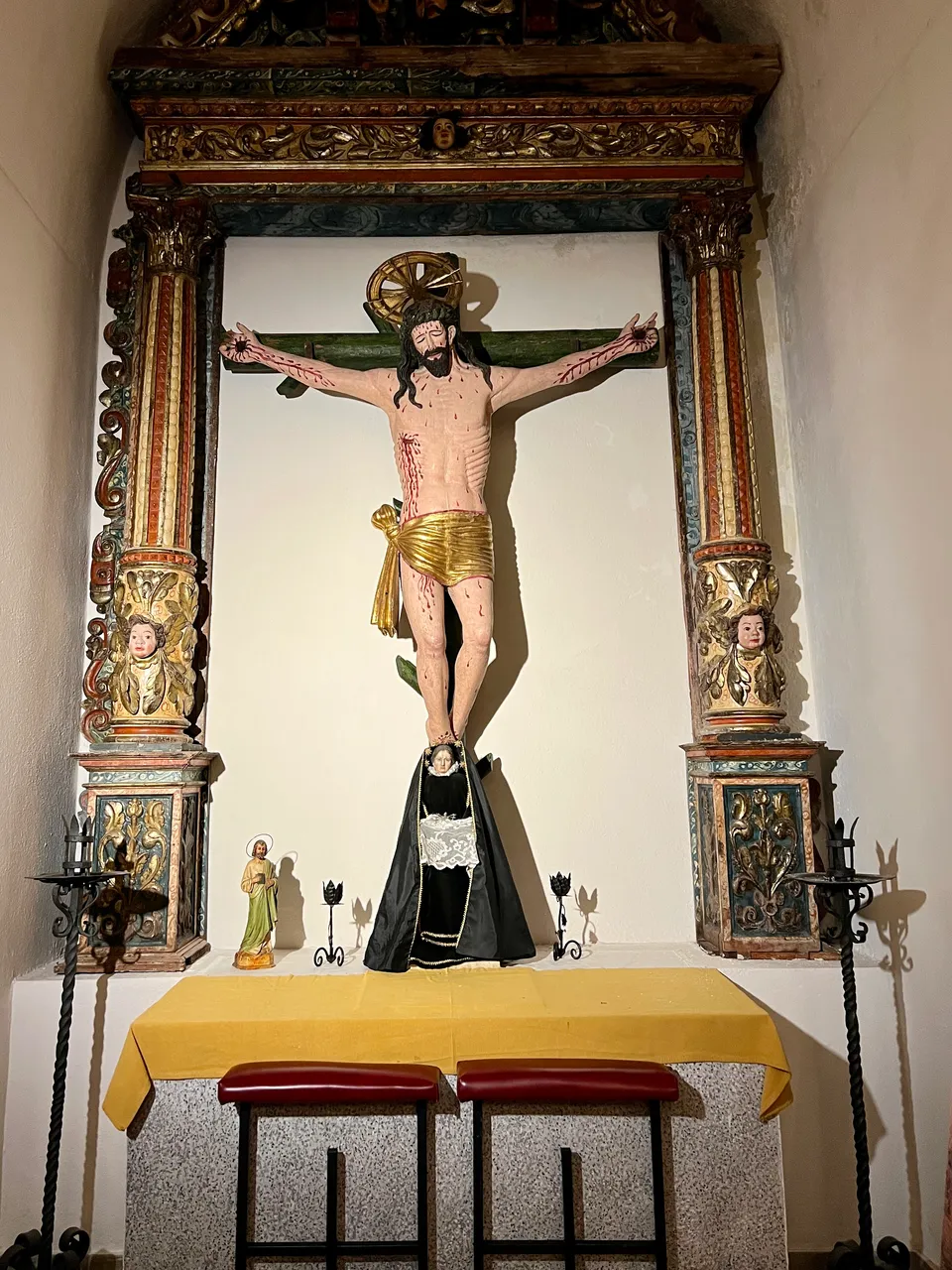
Los retablos son todos de época barroca, y según la información del panel informativo que había en el exterior, están datados entre los siglos XVII y XVIII.
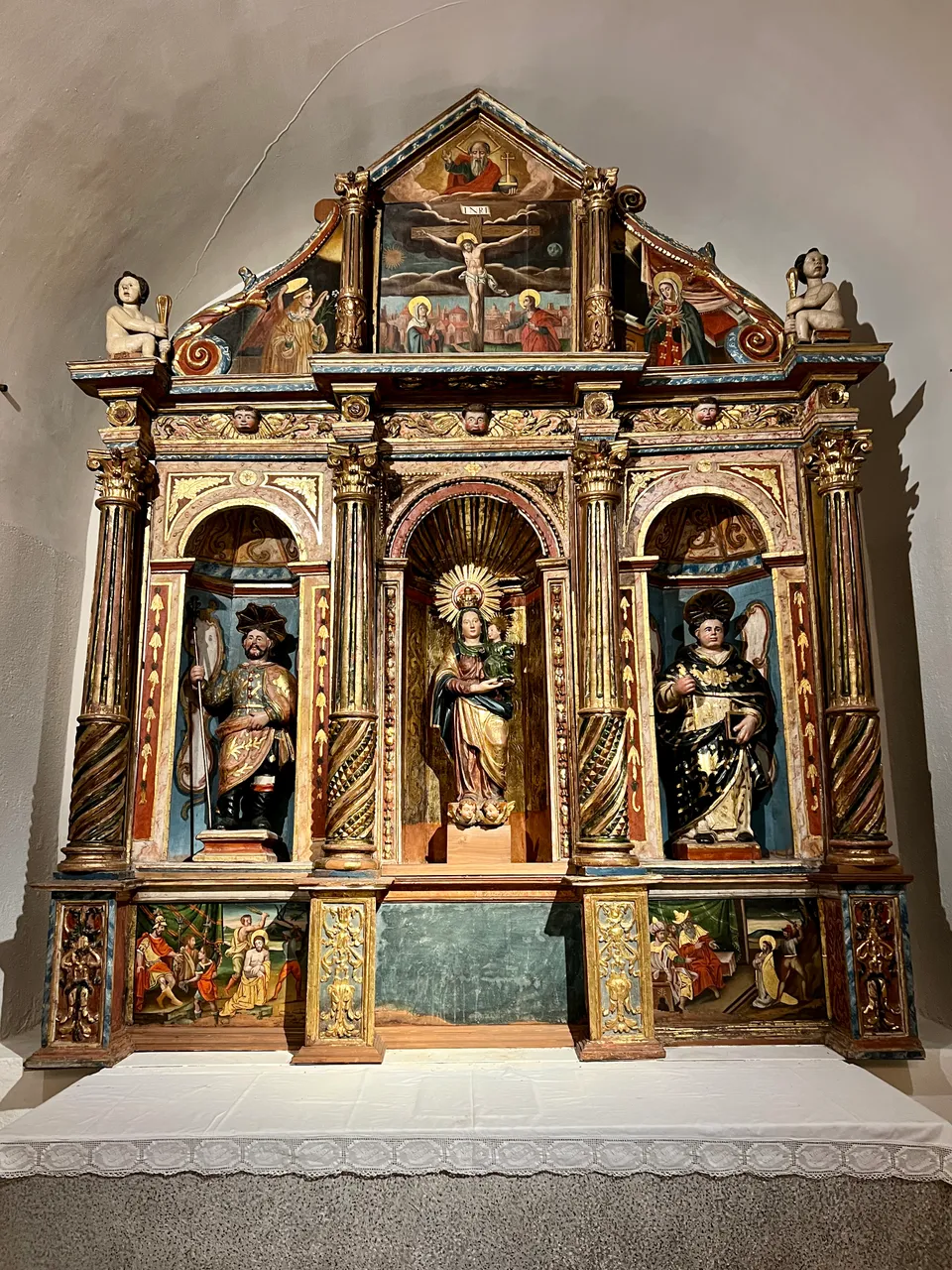
La policromía de este retablo es espectacular y está muy bien conservada.
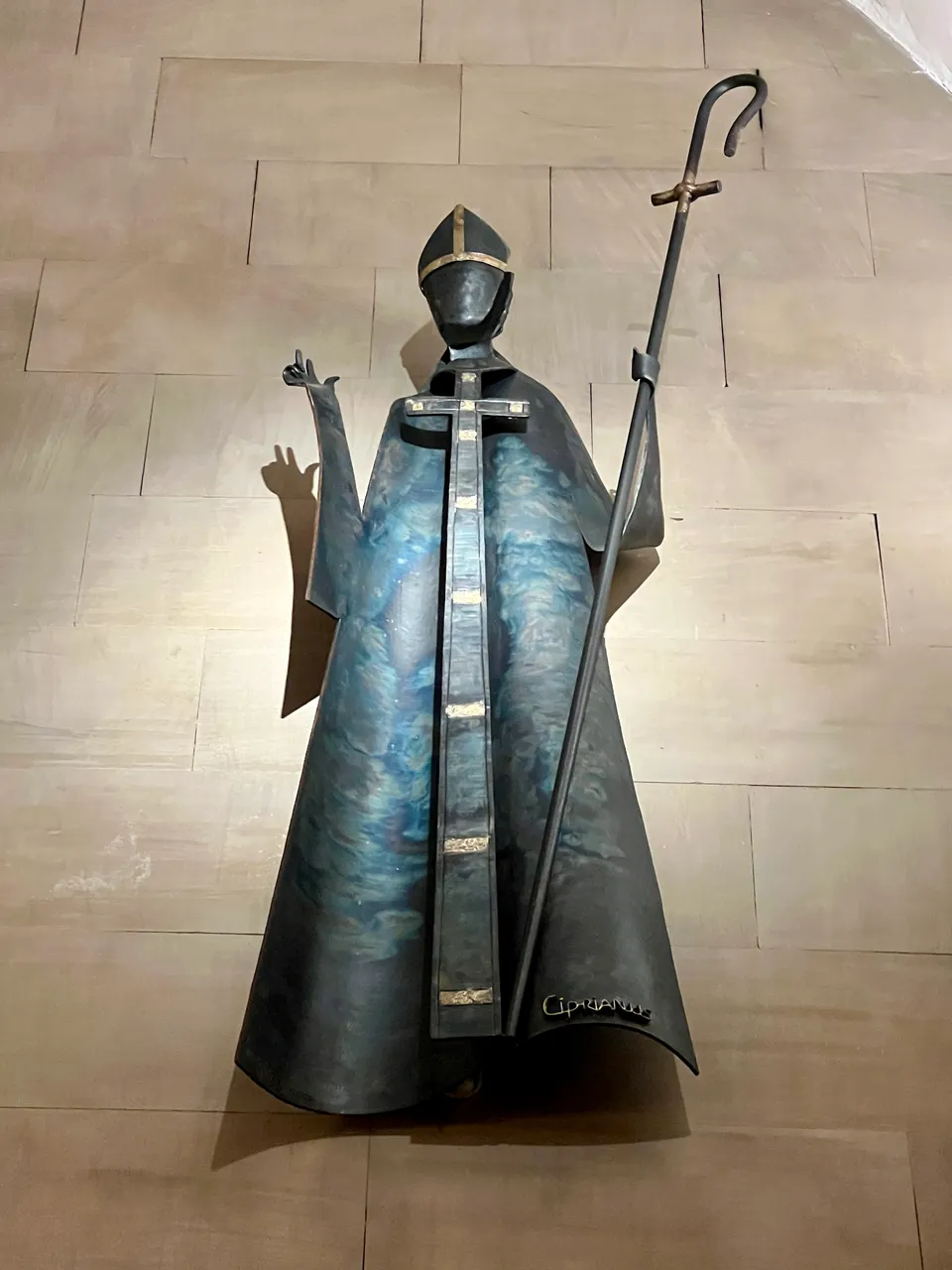
En la pared del frontal del altar hay dos figuras de forja. Solo fotografié esta por ser bastante similares.
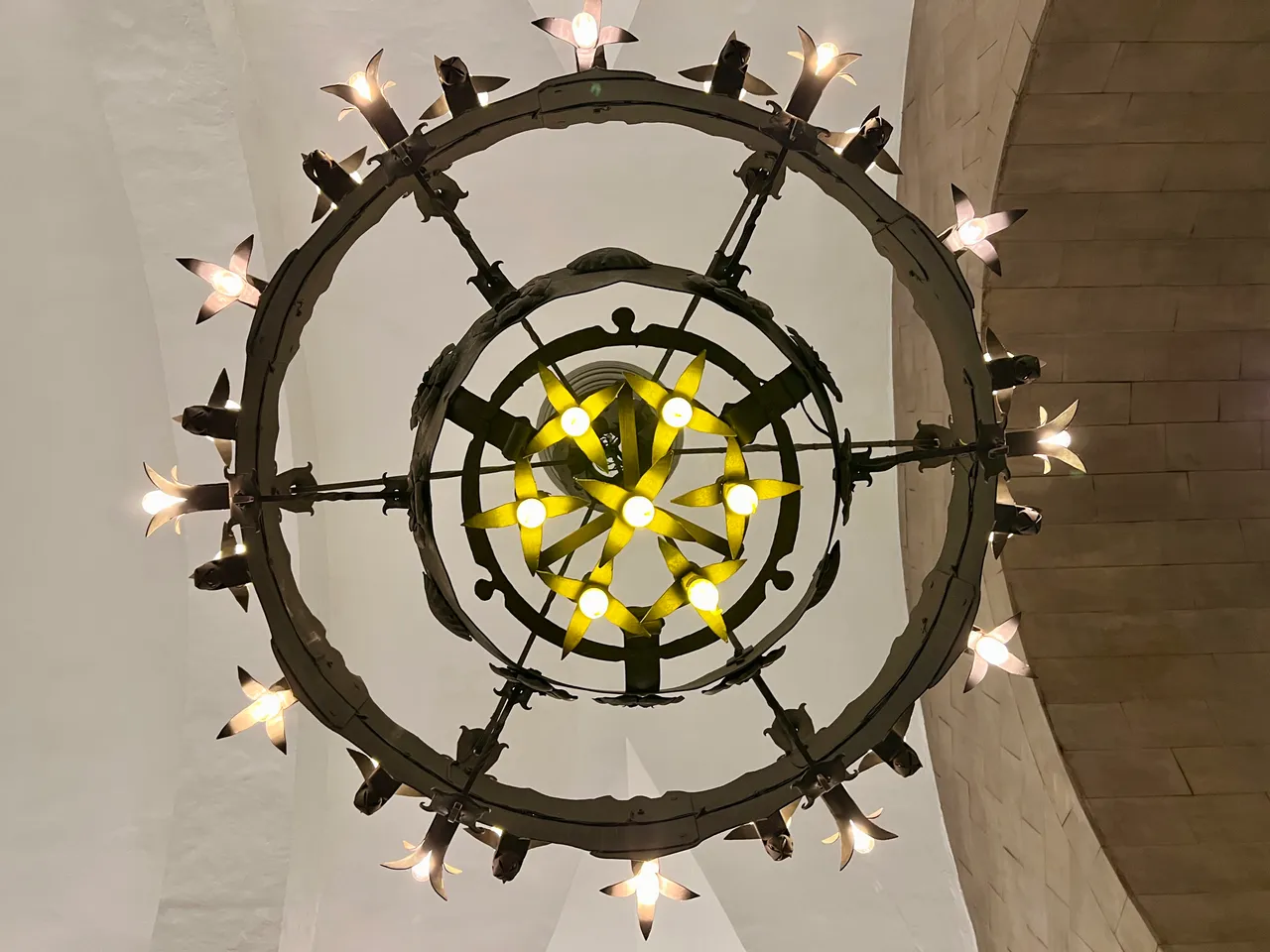
La lámpara central también me gustó mucho. La calidez de las luces compensa la frialdad del metal.
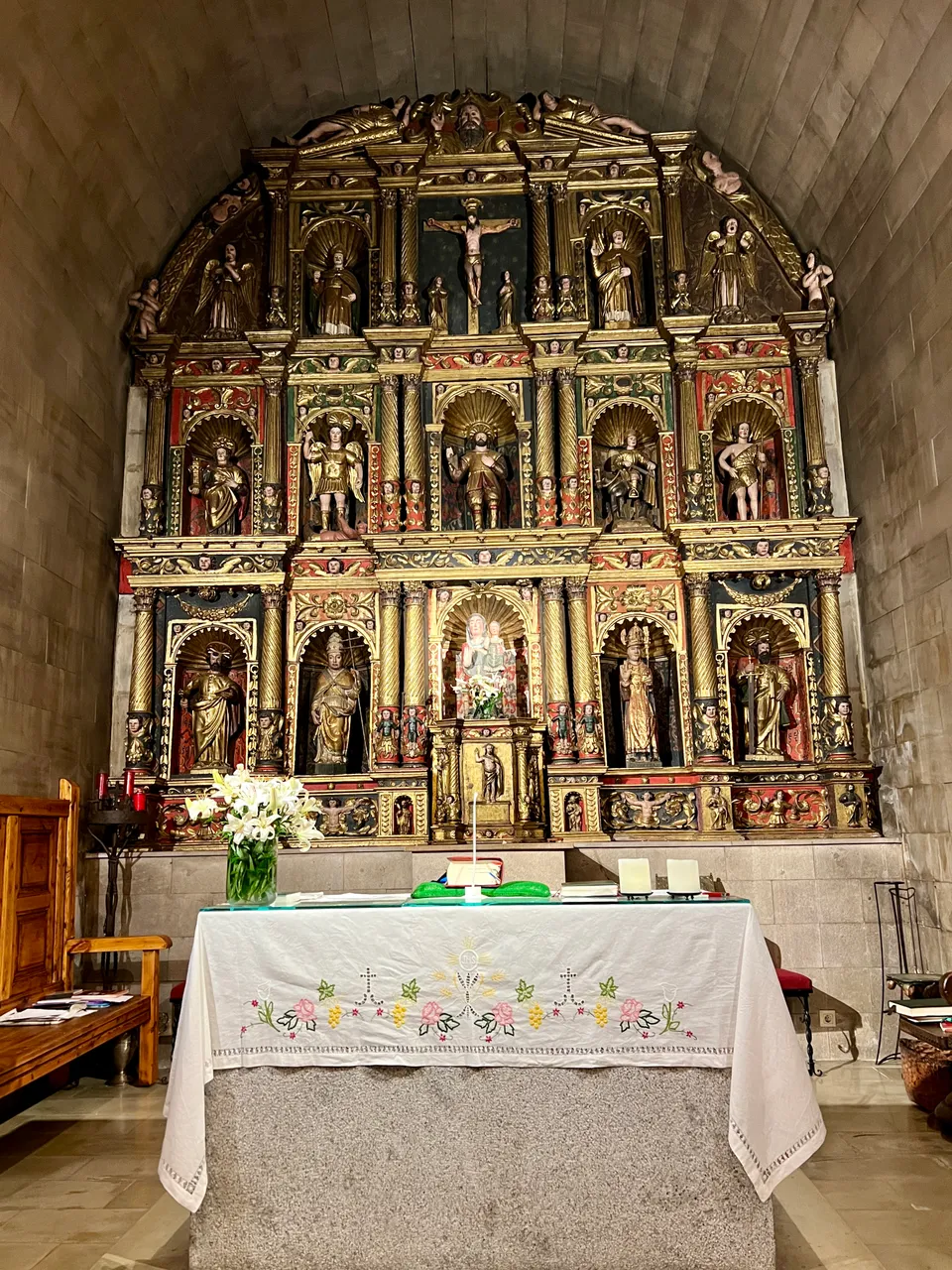
El altar principal no tiene un hueco libre. Me sorprendió su riqueza, pues no olvidemos que estamos en un pueblo de unos 5000 habitantes.
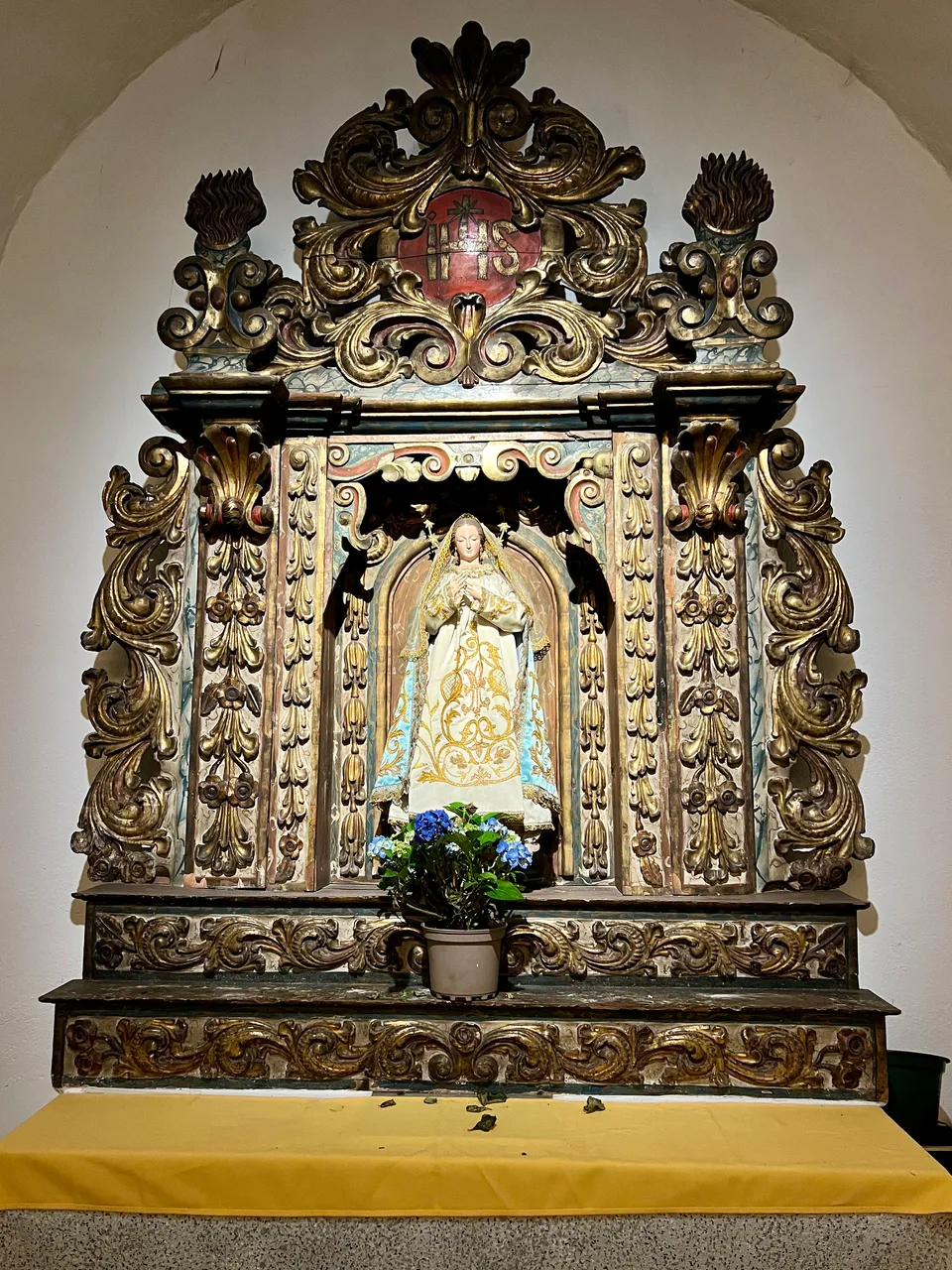
Como contraste, en este altar lateral la única talla es la de la Virgen.
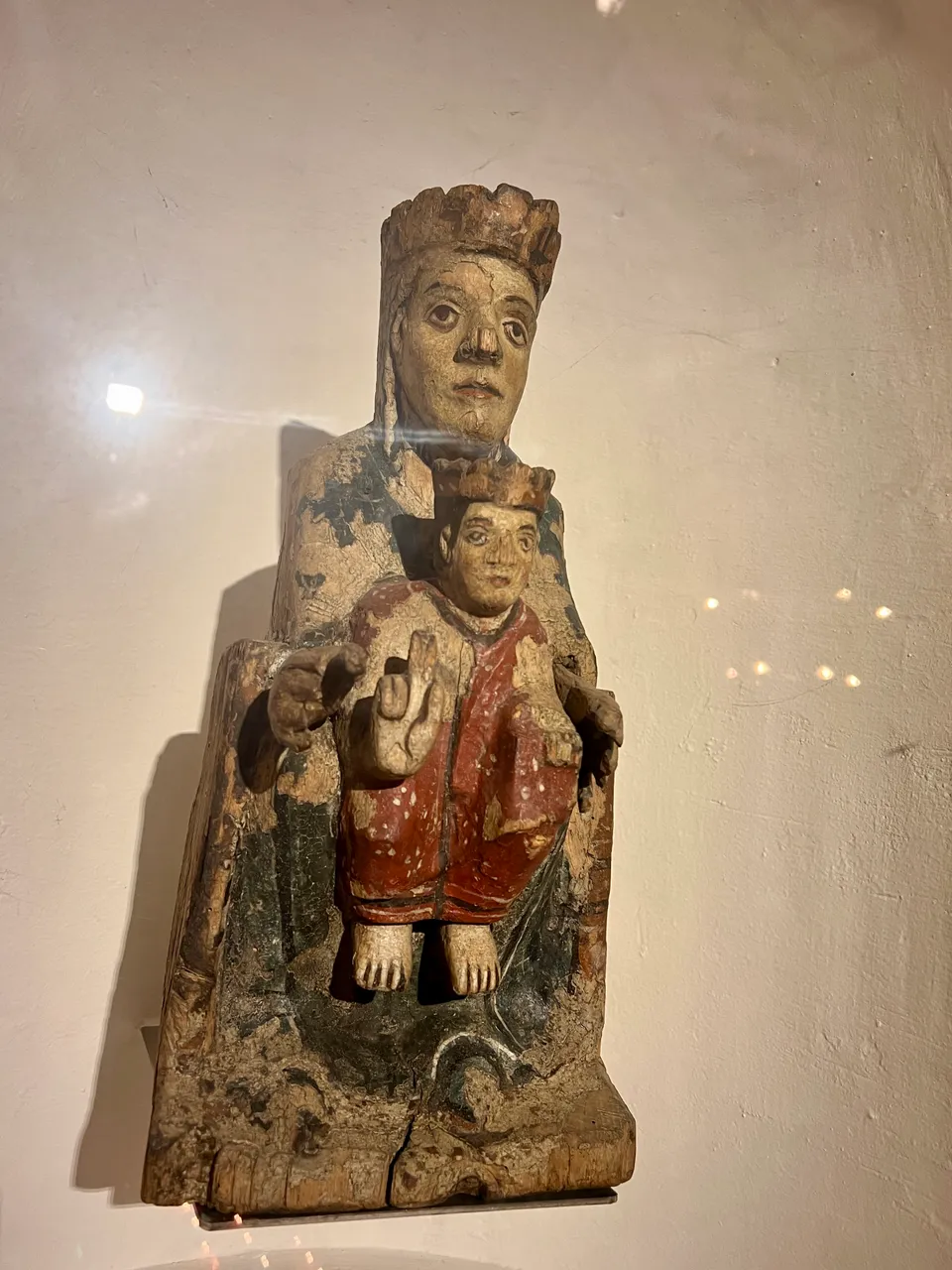
Esta es la pieza más valiosa de la iglesia. Es una talla románica de la Mare de Deu, de alrededor de los siglos XI-XII. Mide solo 44 centímetros, siendo la más pequeña del país. Es de madera policromada y considerando que tiene casi un milenio su conservación es muy buena.

Se ve que la talla tiene mucha devoción, al menos eso se deduce de la cantidad de velas encendidas que tenía delante.
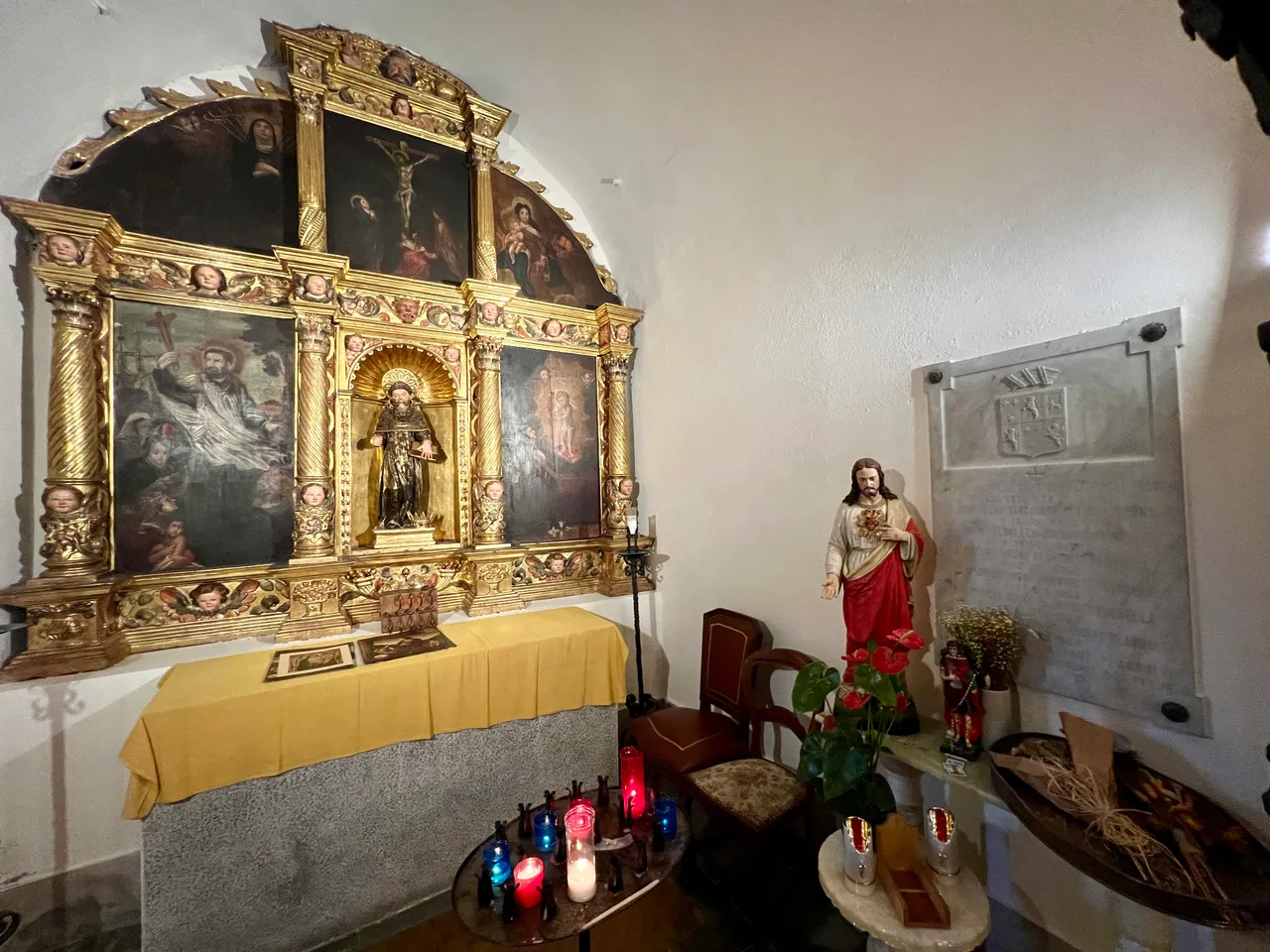
En esta otra capilla destaca la lápida presidida por un Sagrado Corazón de Jesús, adornado con flores.
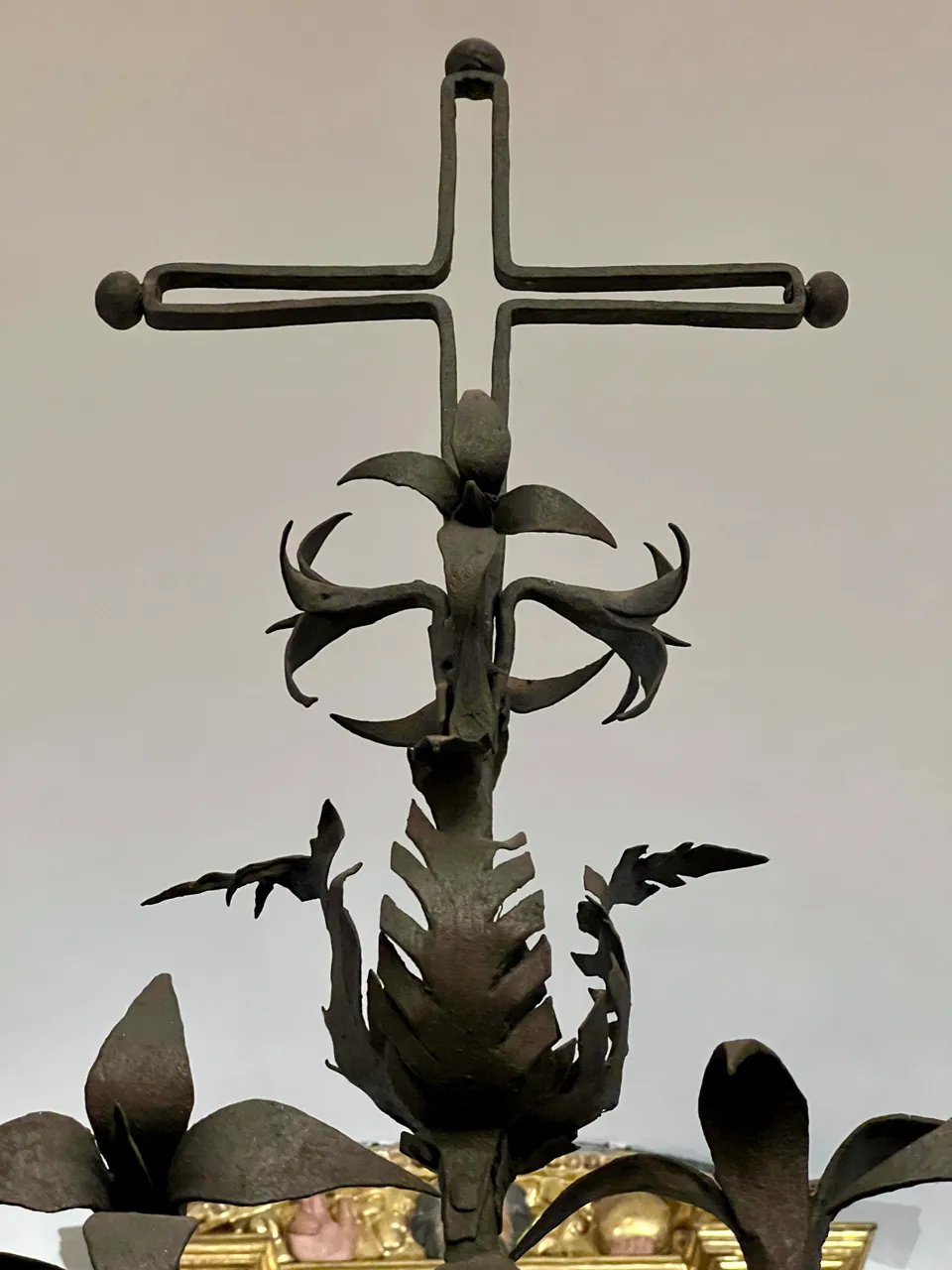
Las capillas tienen un enrejado con detalles únicos y bonitos.

En esta vista puedes ver la iglesia desde la puerta.
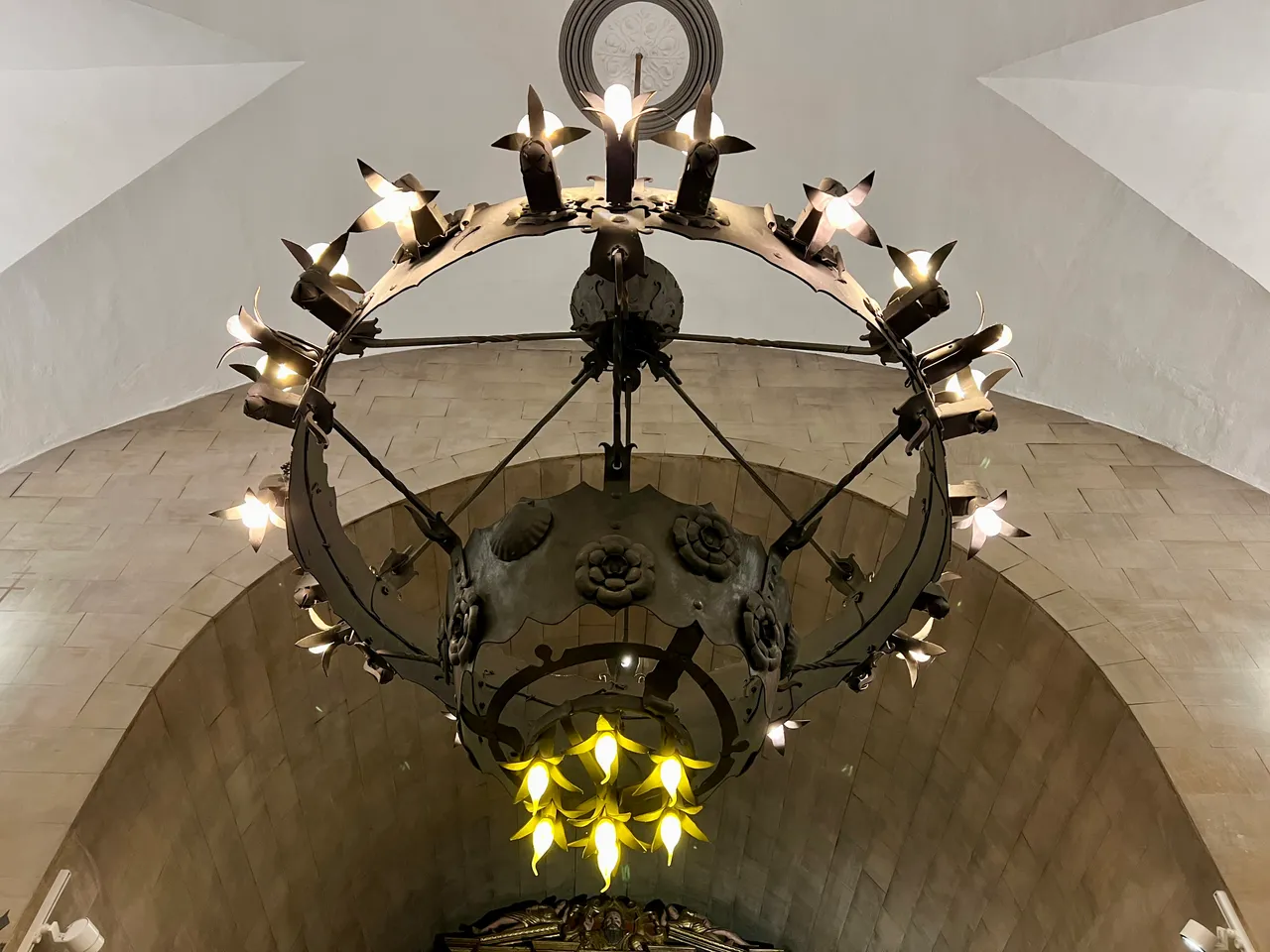
Terminamos esta visita con otra imagen de la lámpara principal en la que apreciar nuevos detalles. ¿Ves el que es diferente? ¿Sabes qué significa? 😉
Hasta la próxima publicación. Mientras tanto, ¡cuídate!

Herramientas: Cámara iPhone 13 Pro, editor de fotos Mac, app iMovie.
Si te gusta lo que publico, únete a mi Fanbase pinchando aquí

©️Copyright 2024 Paloma Peña Pérez. Todos los derechos reservados.



Hi, dear hiver.
I'm resuming photography posts after last week's break, when my life was turned upside down. But I have to keep going and doing the things I love is a great way to renew my motivation.
The Andorran village of Ordino has a small parish church from the 17th century, dedicated to its patron saints San Corneli and San Cebrià. In this post I show you inside and out.

The bell tower, once the highest point in the village, stands out from the rest of the building. Its silhouette is typical of the Pyrenees mountains, with a square floor plan and a slate roof on four sides.

The church is located next to the town hall. They are separated by a short flight of steps, at the end of which we reach a small square. Here there is a peculiar construction, a roof covering a quadrangular space under which there is nothing. It was used as a place for ceremonies to ward off storms.

The door of the temple is tiny and has hardly any ornamentation, although I really liked the wrought iron parts of the bolt and the knocker. The valley in which Ordino is located had the extraction and manufacture of iron as its main economic activity centuries ago and this can be seen everywhere, including its parish centre.

The church has four side chapels and a central apse with the altar. The dimensions of all of them are small, as can be seen in this first one.

The altarpieces are all from the Baroque period, and according to the information panel on the outside, they are dated between the 17th and 18th centuries.

The polychromy of this altarpiece is spectacular and very well preserved.

On the front wall of the altar there are two wrought iron figures. I only photographed this one because they are quite similar.

I also liked the central lamp very much. The warmth of the lights compensates for the coldness of the metal.

The main altar does not have an empty space. I was surprised by its richness, as we are in a village of about 5000 inhabitants.

In contrast, the only carving on this side altar is that of the Virgin.

This is the most valuable piece in the church. It is a Romanesque carving of the Mare de Deu, from around the 11th-12th centuries. It measures only 44 centimetres, making it the smallest in the country. It is made of polychrome wood and considering that it is almost a millennium old, it is very well preserved.

It can be seen that the carving has a lot of devotion, at least that can be deduced from the number of lighted candles in front of it.

In this other chapel, the tombstone presided over by a Sacred Heart of Jesus, adorned with flowers, stands out.

The chapels have a latticework with unique and beautiful details.

In this view you can see the church from the door.

We finish this visit with another image of the main chandelier to appreciate new details. Do you see the one that is different? Do you know what it means? 😉
Until the next post. In the meantime, take care!

Tools: iPhone 13 Pro camera, Mac photo editor, iMovie app.
Translated with DeepL
If you like my content, join my Fanbase clicking here

©️Copyright 2024 Paloma Peña Pérez. All rights reserved.

